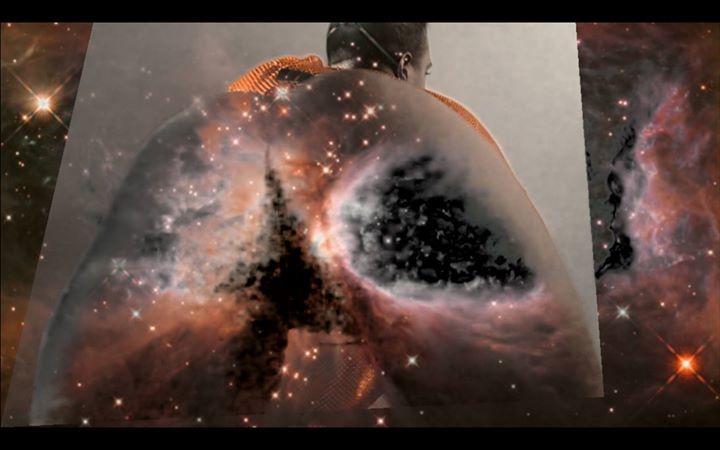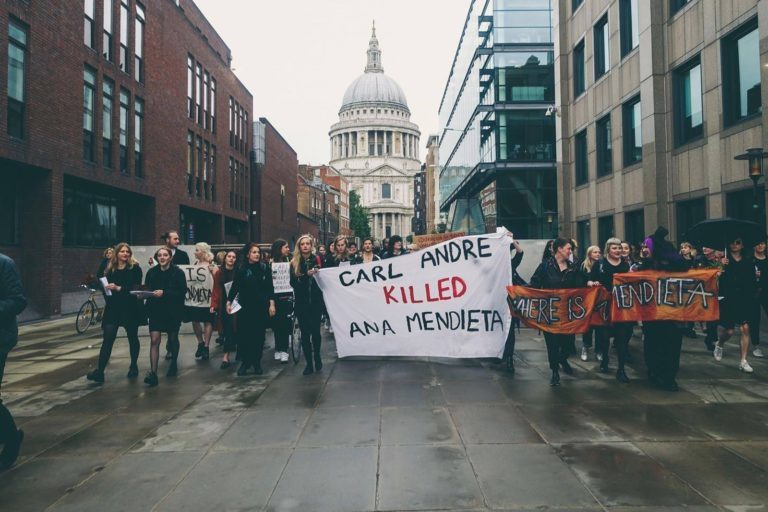In response to the rising austerity and creeping fascism in the UK and beyond, there has been a growing concern amongst artists to confront the effects that this hostile political environment is having on its queer, marginalised and artistic communities. Of note, female artists have meditated on the tempestuous and emotional implications of this political turmoil, through the digital, performative and material.
After the UK voted to leave the EU in June, the eagerness to believe we were potentially entering a situation whereby the political future of Britain was unclear, adhering to a space of apathy, presented itself to some as an easy— and damaging, position to take. On the horizon was a climate that induced anxiety within all those who voted remain. Within the marginalised, grass root communities and the vulnerable, a collective consciousness of fear and isolation arose amongst individuals. This situation posed questions of our active engagements with political outrage. In response to an ever looming climate of disparity and austerity, these three artists and exhibition reiterate the emotional economies polarised by this political dialogue and adherence.
Liv Wynter — Lessons in Anti-Apathy
In seeking to engage in an active revolt against rising fascism, racism and misogyny, artist Liv Wynter’s Lessons in Anti-Apathy— a panel housed at Arcadia Missa in summer 2016, asks us to acknowledge the split which has risen from our political climate: those who actively engage and take to the streets, and others who do not not utilise direct action to confront the oppressive structures we are implicated in and by. This series of events— brought together to confront political indifference, created solidarity between marginalised groups, asking important questions of domestic violence and the queer community.
Lessons in Anti-Apathy derives from the apathetic consciousness Wynter witnessed amongst her peers whilst studying at Goldsmiths University. Here, she encountered those who were ‘apathetic through fear of looking like they cared too much, fear of too much emotion, of empathy, of someone rolling their eyes at them.’ This is the precise agenda inherent to Wynter’s Lessons in Anti-Apathy — employing performance as a direct engagement with her audience, instigating dialogues in awareness groups, attempting to create solidarity between marginalised groups.

Rosie Hastings & Hannah Quinlan @Gaybar — Fuck What They Think
Another response to the atmosphere of increasing global fascism — and in wake of the Orlando massacre and its subsequent backlash in The United States — was enacted by artistic duo Hastings and Quinlan’s @Gaybar. @Gaybar housed a month of events called Fuck What They Think, creating a ‘an ark where we can mourn & dance’. The artists invited their audience to enter a critical space, where queer bodies could unite in a collective solidarity. Conceived as a response to the historic use of gay bars, Hastings explains that “@Gaybar was initially created to be an inclusive and creative space that resists the white-cis-male supremacy of the mainstream LGBTQ bar scene.” Set against the backdrop of an increasingly gentrified South London, and lieu of the rapid closure of many historic queer venues in the artist’s native London @Gaybar provides a vital moment of respite in an increasingly precarious social and political environment.
In speaking of safer spaces, or sites of solidarity, Fuck What They Think @Gaybar presented live events DJ’s, performance, dance, film screenings and poetry readings. Of note, Chloe AD Filani’s night Swaying Feels Wit Blk Sirens centered the voices and experiences of black trans women and cis queer women. In response to @Gaybars queer fantasy aesthetic, Filani wanted to construct a safe space entirely for those of colour. Having a largely collaborative role in Fuck What They Think, she worked in the bar throughout the project, observing each events construction and orientation of safe spaces, and how Swaying Feels Wit Blk Sirens might meditate on the project as a whole.
Similarly, Sam Cottington’s screening, Section 28 film club presented a selection of films depicting critical queer systems of health in opposition to neoliberal individualised, competitive health ‘care’ and crisis. It is the attention to these particular issues which allowed Fuck What They Think to operate as a critical space, reimagining the gay bar a community building project, which can be self reflective and constructive.

Wandering/Wilding: Blackness on the Internet — Curated by Legacy Russell at IMT Gallery
Originating from the socio-cultural identity of the flâneur, referenced by Baudelaire as “a roving soul in search of a body”, this autumn IMT’s exhibition, Wandering/Wilding: Blackness on the Internet reflects on the policing of bodies in the US, particularly New York. Seven artists ask what happens to digitalised bodies of colour, when attempting to materialise political concerns such as Black Lives Matter. It seeks to pose the question: are there freedoms which can be realised when mobilising race via the internet?
The exhibition, curated by Legacy Russell, houses artworks by Niv Acosta, Hannah Black, Evan Ifekoya, E. Jane, Devin Kenny, Tabita Rezaire, and Fannie Sosa, who all, through different mediums, challenge the fetishisation of black bodies. It is a revealing exhibition for two reasons —firstly in its attentiveness to the rise in alt-right politics and its direct effect on the coloured body, where the question of visibility resides in what society applauds as its ‘recognisable’ or ‘successful’ bodies; those of colour, transgender are hit the worst. Secondly, the employment of technology and language to construct a narrative around the rematerialisation of the body via the internet, make these works powerful and poignant. The use of wilding is in reference to a slang word from the 80s — where five teenagers of colour were imprisoned for between six and thirteen years, for a crime they were later found innocent of.
The show builds a narrative around direct action, and poses questions of how we can form networks of solidarity. In particular, Niv Acosta’s performance CLAPBACK uses black bodies as a device to explore political issues of race and gender, where the movement of the bodily form engages the audience in a hypnotic, space like narrative. Seemingly, Tabita Rezaire’s piece Sugar Walls Teardom (Homage to Dark Labia) depicts the brutality of modern gynaecology. It presents a series of Shutterstock images on screen, as a symbol of the stolen lives of women who died due to the cruelty of their enslavers.
It remains to be seen whether or not the impending socio-economic and political agendas will have a lasting impact on the future of our communities, whose lives will be directly implicated by austerity. If it does, it will not be on account of the individual, but the negativity of these events reduced by collective action. For now, however, it’s hard to shake the feeling that we must all seek refuge in visible sites of solidarity, taking collective responsibility to resist the current rise in austerity and oppression. It is this explicit oppression which leads to internalised repression, a repression and process artists have the opportunity to mitigate within society.
Credits
Text Hatty Nestor
